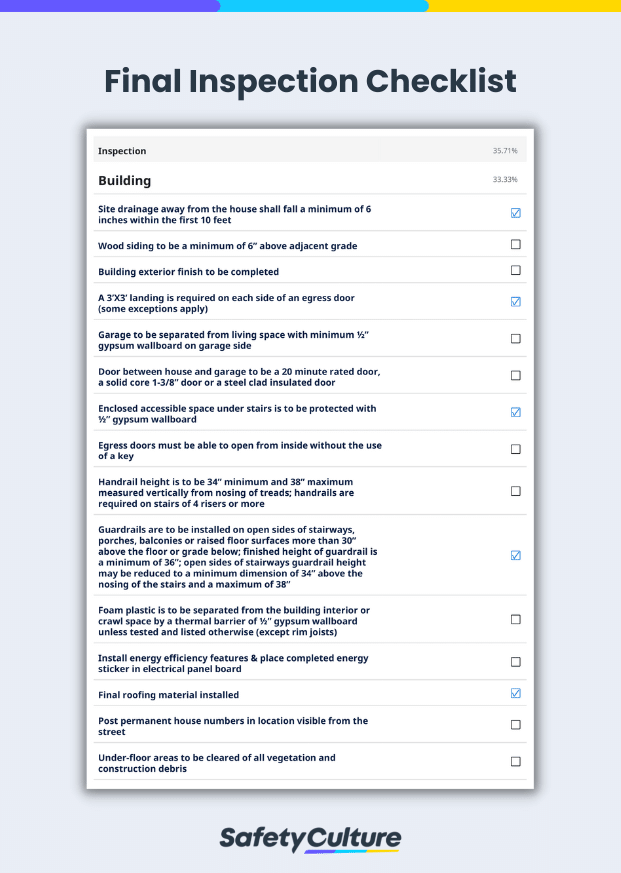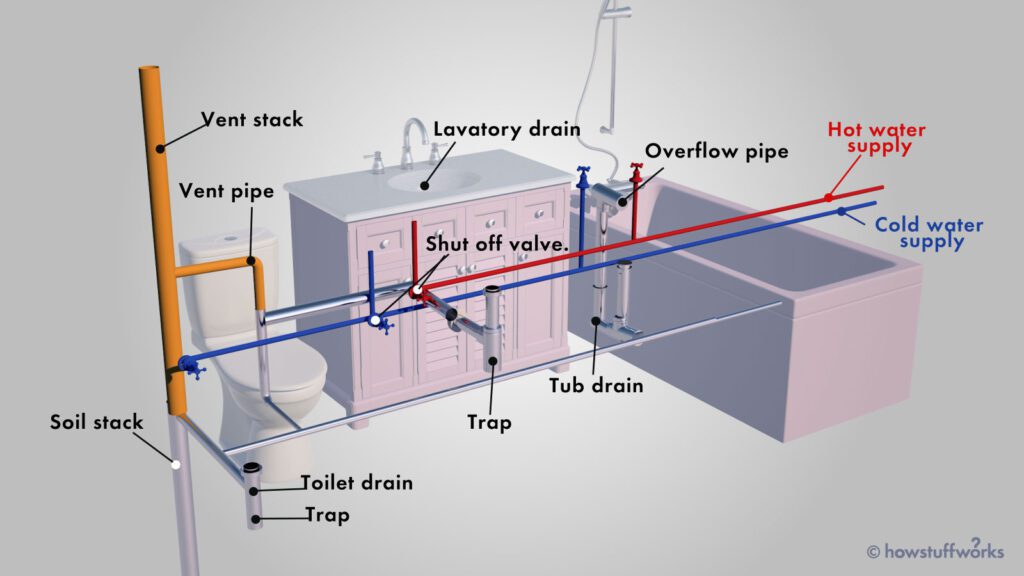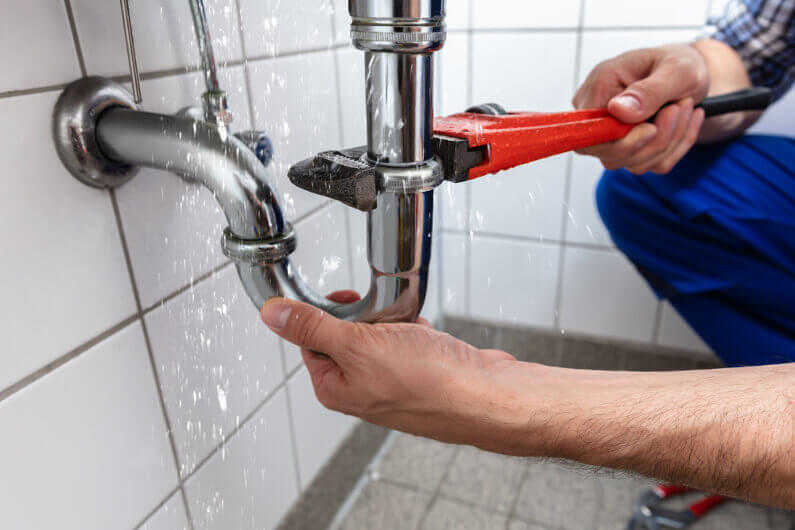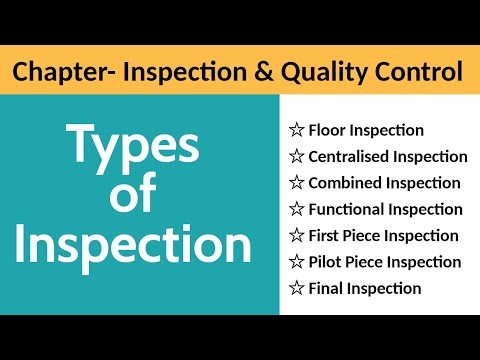When it comes to conducting inspections, having a comprehensive checklist is crucial to ensure that no detail is overlooked. Whether you’re inspecting a property, equipment, or a project, the items on your checklist can make all the difference in identifying potential issues or areas for improvement. In this article, you will discover the essential items that should be included on your inspection checklist to ensure a thorough assessment every time. From safety measures to specific components, we’ve got you covered on what to include for a successful inspection.
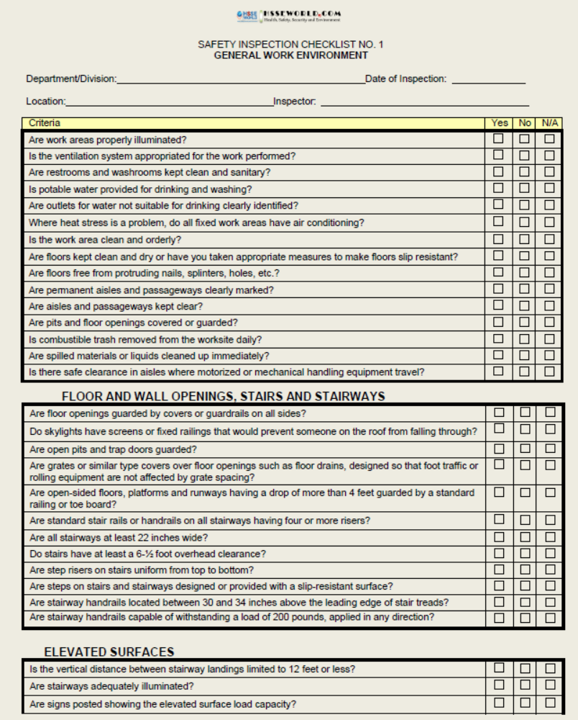

Exterior
Roof
When inspecting the exterior of a property, it’s important to start with the roof. Look for any signs of damage, such as missing or broken shingles, sagging areas, or water stains. Pay attention to the condition of the flashing around chimneys, vents, and skylights, as these areas are prone to leaks. A thorough inspection of the roof will help identify any potential issues that may need to be addressed.
Gutters
Inspecting the gutters is crucial to ensure proper water drainage and prevent water damage to the property. Check for any signs of clogging, such as leaves, debris, or moss. Make sure the gutters are securely attached to the house and that they are free from any cracks or damage. Additionally, ensure that downspouts are properly connected and directing water away from the foundation.
Siding
The condition of the siding plays a significant role in protecting the structure of the property. Inspect the siding for cracks, warping, or signs of rot. Pay close attention to areas that are exposed to moisture, as they are more prone to damage. Ensure that the siding is properly installed and that there are no loose or missing pieces. A well-maintained siding enhances the overall appearance of the property and keeps it protected from the elements.
Windows
Windows not only provide natural light and ventilation but also contribute to the energy efficiency of the property. Inspect each window for any cracks, broken seals, or foggy glass, as these can indicate a need for repair or replacement. Make sure the windows open and close smoothly and that the locks are functioning properly. Properly sealed and maintained windows help keep the indoor environment comfortable and secure.
Doors
Doors are an essential part of the property’s security and insulation. Inspect both exterior and interior doors for any signs of damage, such as cracks, warping, or deteriorated weatherstripping. Ensure that the doors open and close smoothly and that the locks are secure. Additionally, check for proper insulation around the door frames to prevent drafts and energy loss.
Foundation
A solid and stable foundation is fundamental to the structural integrity of the property. Inspect the foundation for any cracks, settling, or signs of water damage. Look for any areas where the foundation may be deteriorating or shifting. These issues can lead to costly structural problems if not addressed promptly. It’s advisable to consult a professional if any significant concerns are observed during the inspection.
Deck/Patio
Inspecting the deck or patio is important to ensure its safety and longevity. Check for any signs of rot, loose boards, or weak support beams. Look for proper attachment to the house and make sure railings are secure. Ensure that stairs are stable and free of any hazards. A well-maintained deck or patio provides an enjoyable outdoor space for relaxation and entertainment.
Driveway
The driveway is often subjected to heavy use and needs to be inspected for cracks, potholes, or uneven surfaces. Check for any signs of damage caused by freezing and thawing, as well as any oil stains or other contaminants. Ensure proper water drainage to prevent pooling and potential damage. A well-maintained driveway enhances the curb appeal of the property and provides a safe and convenient parking area.
Fences
Fences add privacy, security, and aesthetic appeal to the property. Inspect the fences for any signs of damage, such as rot, loose boards, or broken posts. Ensure that gates open and close properly and that latches are secure. Check for any leaning or sagging sections that may require reinforcement or repair. Properly maintained fences enhance the overall appearance and value of the property.
Landscaping
The landscaping is an important aspect of the property’s aesthetics and curb appeal. Assess the overall condition of the landscape, including lawn, trees, shrubs, and flower beds. Look for any signs of overgrown vegetation, pest infestations, or drainage issues. Ensure that irrigation systems are functioning properly and that any necessary maintenance, such as pruning or fertilizing, is up to date. Landscaping can greatly contribute to the overall enjoyment and value of the property, so it’s important to keep it well-maintained.
Interior
Ceilings
Inspecting the ceilings is essential to identify any signs of water damage, cracks, or sagging. Look for any discoloration or stains that may indicate a leak from the roof or plumbing. Pay attention to the texture of the ceiling and make sure it is intact. Any signs of damage should be addressed promptly to prevent further issues and maintain the overall condition of the property.
Walls
Inspect the walls for any cracks, water stains, or peeling paint. Check for an even and smooth surface, as well as proper insulation. Look for any signs of mold or mildew, especially in areas prone to moisture, such as bathrooms or basements. Ensure that any wall coverings, such as wallpaper or paneling, are properly attached and in good condition. Well-maintained walls contribute to a clean and visually appealing interior.
Flooring
The condition of the flooring greatly affects the overall appearance and comfort of the property. Inspect all types of flooring, including carpet, hardwood, tile, and laminate, for any signs of damage, such as stains, scratches, or wear. Look for proper installation and ensure that the flooring is level and free from any tripping hazards. Properly maintained flooring enhances the aesthetics and value of the property.
Windows
Similar to exterior windows, inspect interior windows for any cracks, broken seals, or foggy glass. Ensure that the windows open and close smoothly and that any locks or latches are functional. Check for proper insulation to maintain an energy-efficient and comfortable indoor environment. Well-maintained windows contribute to both the visual appeal and functionality of the property.
Doors
Inspect the interior doors for any signs of damage, such as cracks or warping. Ensure that the doors open and close smoothly and that the locks are secure. Pay attention to the condition of the hinges and doorknobs. Properly functioning interior doors provide privacy and security within the property.
Stairs
Properly maintained stairs are essential for safety within the property. Inspect the condition of the stair treads, risers, and handrails. Look for any loose or damaged steps and ensure that the handrails are securely attached. Check that the stairs are free from any tripping hazards and that they meet building code requirements. Well-maintained stairs provide a safe means of moving between different levels of the property.
Lighting
Inspect all lighting fixtures, including ceiling lights, wall sconces, and lamps, for any signs of damage or malfunction. Ensure that light bulbs are properly installed and functioning. Consider the placement of lighting fixtures to provide adequate illumination in each area of the property. Well-lit spaces enhance both the functionality and ambiance of the property.
Electrical outlets
Check all electrical outlets throughout the property to ensure they are properly functioning and not damaged. Make sure there are no exposed wires or loose connections. Consider the placement and number of outlets in each room to meet your electrical needs. Any issues with electrical outlets should be addressed by a qualified electrician to ensure safety.
Plumbing fixtures
Inspect all plumbing fixtures, such as sinks, faucets, toilets, and showers, for any signs of leaks, clogs, or damage. Check for proper water flow and drainage. Look for any loose connections or worn-out parts that may require repair or replacement. Consider the condition and functionality of each fixture in relation to your needs. Well-maintained plumbing fixtures ensure a functional and hygienic living environment.
HVAC systems
Heating, ventilation, and air conditioning (HVAC) systems play a crucial role in maintaining indoor comfort. Inspect the HVAC systems, including the furnace, air conditioner, ductwork, and filters. Check for any signs of damage, leaks, or inadequate airflow. Ensure that the systems are properly maintained and that filters are regularly replaced. Consider the age and energy efficiency of the systems to determine if any upgrades or repairs are necessary.
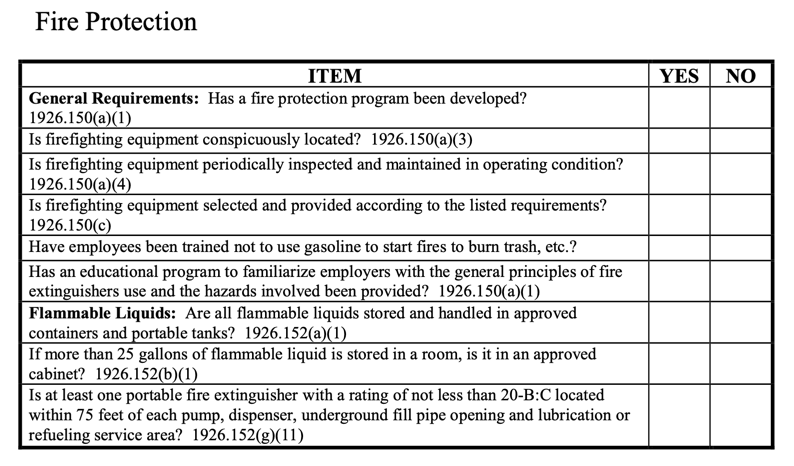

Kitchen
Cabinetry
Inspect the kitchen cabinets for any signs of damage, such as warped or peeling surfaces. Ensure that cabinet doors and drawers open and close smoothly. Check for proper alignment and consider the amount of storage space available. Look for any water damage or mold growth under sinks or near dishwashers. Well-maintained kitchen cabinets provide both functional storage and visual appeal.
Countertops
Inspect the countertops for any signs of damage, such as cracks, stains, or burns. Consider the durability and ease of maintenance of the material used for the countertops. Ensure that the countertops are properly sealed to prevent water damage or staining. Well-maintained countertops enhance the functionality and aesthetics of the kitchen.
Sink
Inspect the sink for any signs of leaks, clogs, or damage. Check that the faucet is working properly and that there are no water stains or damage around the sink area. Look for proper water flow and drainage. Ensure that the sink is properly sealed to prevent water damage to the surrounding area. A well-maintained sink contributes to a clean and functional kitchen.
Faucet
Similar to the sink, inspect the faucet for any signs of leaks or damage. Check for proper water flow and temperature control. Consider the ease of use and functionality of the faucet. Any issues with the faucet should be addressed to prevent water wastage and potential damage to the sink or surrounding areas.
Range/Stove
Inspect the range or stove for any signs of damage, such as broken burners or malfunctioning controls. Check for proper ventilation and ensure that the exhaust fan is functioning correctly. Consider the age and condition of the appliance and whether any repairs or upgrades are necessary. Properly functioning ranges or stoves are essential for meal preparation and cooking.
Refrigerator
Inspect the refrigerator for any signs of damage, such as broken shelves or malfunctioning temperature controls. Check the condition of the door gaskets to ensure proper sealing. Consider the size and energy efficiency of the refrigerator in relation to your needs. Ensure that the refrigerator is properly clean and odor-free. A well-maintained refrigerator keeps food fresh and contributes to energy efficiency.
Dishwasher
Inspect the dishwasher for any signs of leaks or damage. Check that the dishwasher is properly secured to the cabinet and that the door closes securely. Ensure that the dishwasher is cleaning effectively and that all necessary components, such as racks and spray arms, are in good condition. A well-maintained dishwasher provides convenience and cleanliness in the kitchen.
Microwave
Inspect the microwave for any signs of damage, such as broken buttons or malfunctioning heating elements. Check for proper ventilation and ensure that the exhaust fan is functioning correctly. Consider the size and functionality of the microwave in relation to your needs. Any issues with the microwave should be addressed promptly for safety and convenience.
Ventilation
Proper ventilation in the kitchen is essential for removing cooking odors, excess moisture, and potentially harmful fumes. Inspect the range hood or ventilation system for proper function and cleanliness. Ensure that filters are clean or regularly replaced. Consider the noise level and air circulation provided by the ventilation system. Well-maintained kitchen ventilation contributes to a comfortable and healthy cooking environment.
Flooring
The kitchen flooring should be durable, easy to clean, and aesthetically pleasing. Inspect the flooring for any signs of damage, such as cracks, stains, or loose tiles. Consider the material used for the flooring and its suitability for the kitchen environment. Ensure that the flooring is properly sealed to prevent water damage. A well-maintained kitchen floor enhances the overall appearance and functionality of the space.
Bathroom
Bathtub/Shower
Inspect the bathtub or shower for any signs of leaks, cracks, or damage to the surface. Check for proper drainage and ensure that the showerhead and faucets are functioning correctly. Consider the condition and functionality of any grab bars or safety features. Address any issues with the bathtub or shower promptly to prevent water damage and ensure a safe bathing experience.
Toilet
Inspect the toilet for any signs of leaks, cracks, or damage. Check for proper flushing and ensure that the toilet tank fills and shuts off correctly. Look for any loose connections or issues with the wax ring seal. Consider the condition and functionality of any toilet seat or safety features. A well-maintained toilet contributes to a hygienic and functional bathroom.
Sink
Inspect the bathroom sink for any signs of leaks, cracks, or damage. Check that the faucet is working properly and that there are no water stains or damage around the sink area. Look for proper water flow and drainage. Ensure that the sink is properly sealed to prevent water damage to the surrounding area. A well-maintained sink contributes to a clean and functional bathroom.
Faucet
Similar to the sink, inspect the faucet for any signs of leaks, drips, or damage. Check for proper water flow and temperature control. Consider the ease of use and functionality of the faucet. Any issues with the faucet should be addressed to prevent water wastage and maintain the overall functionality of the bathroom.
Vanity
Inspect the vanity for any signs of damage, such as warped or peeling surfaces. Ensure that the cabinet doors and drawers open and close smoothly. Check for proper alignment and consider the amount of storage space available. Look for any water damage or mold growth under the sink. Well-maintained bathroom vanities provide both functional storage and visual appeal.
Flooring
The bathroom flooring should be durable, waterproof, and easy to clean. Inspect the flooring for any signs of damage, such as cracks, stains, or loose tiles. Consider the material used for the flooring and its suitability for the bathroom environment. Ensure that the flooring is properly sealed to prevent water damage. A well-maintained bathroom floor enhances the overall appearance and functionality of the space.
Ventilation
Proper ventilation in the bathroom is crucial for removing excess moisture and preventing the growth of mold and mildew. Inspect the bathroom ventilation system, such as exhaust fans or windows, for proper function and cleanliness. Ensure that the system effectively removes moisture and odors from the bathroom. Well-maintained bathroom ventilation contributes to a healthy and comfortable bathing experience.
Lighting
Inspect all lighting fixtures in the bathroom for any signs of damage or malfunction. Ensure that the lighting is adequate throughout the space. Consider the placement and type of lighting fixtures to provide proper illumination for various tasks, such as applying makeup or shaving. Well-lit bathrooms enhance both functionality and the overall ambiance of the space.
Plumbing
Inspect all plumbing fixtures, such as sinks, faucets, toilets, and showers, for any signs of leaks, clogs, or damage. Check for proper water flow and drainage. Look for any loose connections or worn-out parts that may require repair or replacement. Consider the condition and functionality of each fixture in relation to your needs. Well-maintained plumbing fixtures ensure a functional and hygienic bathroom environment.
Grout/Caulk
Check the condition of grout and caulk in the bathroom, especially in areas prone to moisture, such as around the shower or bathtub. Look for any signs of mold, mildew, or damage. Ensure that the grout is intact and properly sealed. Consider cleaning or reapplying grout and caulk as necessary to prevent water damage and maintain a clean appearance. Well-maintained grout and caulk prolong the lifespan of bathroom fixtures and prevent water seepage.
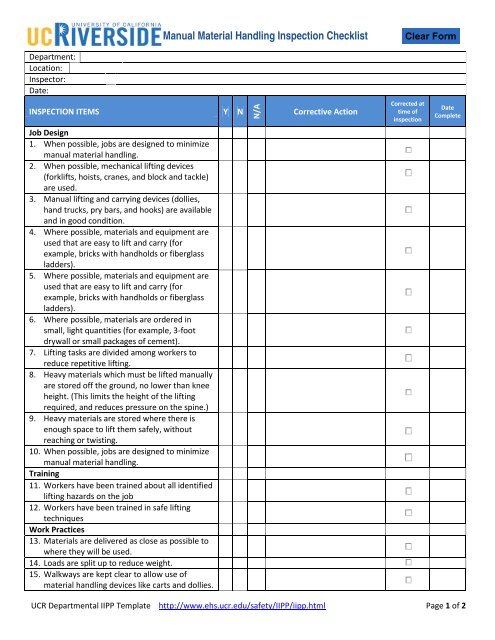

Bedrooms
Windows
Inspect the bedroom windows for any signs of damage, such as cracks, broken seals, or foggy glass. Ensure that the windows open and close smoothly and that any locks or latches are functional. Check for proper insulation to maintain a comfortable indoor environment. Consider the placement of windows for privacy and natural light. Well-maintained windows contribute to both the visual appeal and functionality of the bedroom.
Doors
Inspect the bedroom doors for any signs of damage, such as cracks or warping. Ensure that the doors open and close smoothly and that the locks are secure. Pay attention to the condition of the hinges and doorknobs. Properly functioning bedroom doors provide privacy and security within the property.
Closets
Inspect the closets for any signs of damage, such as broken or misaligned doors. Ensure that closet doors open and close smoothly and that any shelving or hanging systems are secure. Consider the amount of storage space available and the organization of the closet. Well-maintained closets provide efficient storage and contribute to an organized bedroom.
Lighting
Inspect all lighting fixtures in the bedroom for any signs of damage or malfunction. Ensure that the lighting is adequate for both general illumination and task-specific needs, such as reading. Consider the placement and type of lighting fixtures to create a cozy and inviting atmosphere. Well-lit bedrooms enhance both functionality and relaxation.
Ceiling fans
If the bedroom has a ceiling fan, inspect it for any signs of damage or wobbling. Check that the fan operates smoothly and quietly. Consider the functionality and energy efficiency of the fan. Properly maintained ceiling fans provide comfort and energy savings in the bedroom.
Flooring
The bedroom flooring should be comfortable, durable, and visually appealing. Inspect the flooring for any signs of damage, such as stains, scratches, or wear. Consider the material used for the flooring and its suitability for the bedroom environment. Ensure that the flooring is properly clean and free from tripping hazards. A well-maintained bedroom floor enhances the overall ambiance and comfort of the space.
Walls
Inspect the bedroom walls for any signs of damage, such as cracks, holes, or peeling paint. Check for an even and smooth surface, as well as proper insulation. Look for any signs of mold or mildew, especially in areas prone to moisture, such as near windows or bathrooms. Ensure that any wall coverings, such as wallpaper or paint, are properly attached and in good condition. Well-maintained walls provide a clean and visually appealing bedroom.
Electrical outlets
Check all electrical outlets in the bedroom to ensure they are properly functioning and not damaged. Make sure there are no exposed wires or loose connections. Consider the placement and number of outlets in relation to your electrical needs. Any issues with electrical outlets should be addressed by a qualified electrician to ensure safety.
Smoke detectors
Inspect the smoke detectors in the bedroom to ensure they are properly functioning and have fresh batteries. Consider the placement and number of smoke detectors to provide adequate coverage throughout the property. Regularly test the smoke detectors and replace batteries as needed. Well-maintained smoke detectors play a crucial role in early detection and prevention of fire hazards.
Ventilation
Proper ventilation in the bedroom contributes to a comfortable and healthy indoor environment. Inspect any ventilation systems, such as windows or fans, for proper function and cleanliness. Ensure that the systems effectively remove stale air and prevent excessive moisture buildup. Well-maintained bedroom ventilation promotes good air quality and a restful sleep environment.
Living Room
Windows
Inspect the living room windows for any signs of damage, such as cracks, broken seals, or foggy glass. Ensure that the windows open and close smoothly and that any locks or latches are functional. Check for proper insulation to maintain a comfortable indoor environment. Consider the placement of windows for natural light and views. Well-maintained windows contribute to both the visual appeal and functionality of the living room.
Doors
Inspect the living room doors for any signs of damage, such as cracks or warping. Ensure that the doors open and close smoothly and that the locks are secure. Pay attention to the condition of the hinges and doorknobs. Properly functioning living room doors provide privacy and security within the property.
Fireplace
If the living room has a fireplace, inspect it for any signs of damage or malfunction. Check the condition of the chimney and ensure that it is properly cleaned and free from obstructions. Consider the functionality and safety features of the fireplace. Any issues with the fireplace should be addressed promptly to prevent potential fire hazards.
Ceiling
Inspect the living room ceiling for any signs of damage, such as cracks, water stains, or sagging. Look for any discoloration or mold growth that may indicate a leak from the roof or plumbing. Pay attention to the texture of the ceiling and ensure it is intact. Any signs of damage should be addressed promptly to prevent further issues and maintain the overall condition of the living room.
Flooring
The living room flooring should be durable, comfortable, and visually appealing. Inspect the flooring for any signs of damage, such as stains, scratches, or wear. Consider the material used for the flooring and its suitability for the living room environment. Ensure that the flooring is properly clean and free from tripping hazards. A well-maintained living room floor enhances the overall aesthetics and comfort of the space.
Walls
Inspect the living room walls for any signs of damage, such as cracks, holes, or peeling paint. Check for an even and smooth surface, as well as proper insulation. Look for any signs of mold or mildew, especially in areas prone to moisture. Ensure that any wall coverings, such as wallpaper or paint, are properly attached and in good condition. Well-maintained walls provide a clean and visually appealing living room.
Electrical outlets
Check all electrical outlets in the living room to ensure they are properly functioning and not damaged. Make sure there are no exposed wires or loose connections. Consider the placement and number of outlets in relation to your electrical needs. Any issues with electrical outlets should be addressed by a qualified electrician to ensure safety.
Lighting
Inspect all lighting fixtures in the living room for any signs of damage or malfunction. Ensure that the lighting is adequate for both general illumination and task-specific needs, such as reading or entertaining. Consider the placement and type of lighting fixtures to create a comfortable and inviting atmosphere. Well-lit living rooms enhance both functionality and the overall ambiance of the space.
Ventilation
Proper ventilation in the living room is essential for maintaining good air quality and preventing stagnant air. Inspect any ventilation systems, such as windows or fans, for proper function and cleanliness. Ensure that the systems effectively remove stale air and odors. Well-maintained living room ventilation contributes to a comfortable and healthy indoor environment.
Smoke detectors
Inspect the smoke detectors in the living room to ensure they are properly functioning and have fresh batteries. Consider the placement and number of smoke detectors to provide adequate coverage throughout the property. Regularly test the smoke detectors and replace batteries as needed. Well-maintained smoke detectors play a crucial role in early detection and prevention of fire hazards.


Basement
Foundation
Inspect the basement foundation for any signs of cracks, settling, or moisture intrusion. Look for any signs of water damage or mold growth. Pay attention to any structural issues, such as bowing or leaning walls. Any concerns with the basement foundation should be addressed promptly by a professional to prevent further damage and ensure the stability of the property.
Walls
Inspect the basement walls for any signs of cracks, water stains, or mold growth. Look for any signs of damage or deterioration. Ensure that the walls are properly insulated and that there are no visible termite or pest infestations. Address any issues with the basement walls promptly to maintain a safe and usable space.
Flooring
The basement flooring should be inspected for any signs of damage, such as cracks, stains, or moisture issues. Consider the material used for the flooring and its suitability for the basement environment. Ensure that the flooring is properly installed and adequately sealed to prevent water damage. A well-maintained basement floor provides a clean and functional space.
Windows
Inspect the basement windows for any signs of damage, such as cracks, broken seals, or foggy glass. Ensure that the windows open and close smoothly and that any locks or latches are functional. Check for proper insulation to maintain a comfortable indoor environment. Consider the placement of windows for natural light and emergency egress. Well-maintained basement windows contribute to both the functionality and safety of the space.
Doors
Inspect the basement doors for any signs of damage, such as cracks or warping. Ensure that the doors open and close smoothly and that the locks are secure. Pay attention to the condition of the hinges and doorknobs. Properly functioning basement doors provide privacy and security within the property.
Electrical outlets
Check all electrical outlets in the basement to ensure they are properly functioning and not damaged. Make sure there are no exposed wires or loose connections. Consider the placement and number of outlets in relation to your electrical needs. Any issues with electrical outlets should be addressed by a qualified electrician to ensure safety.
Plumbing
Inspect the basement plumbing fixtures, such as sinks, faucets, and laundry connections, for any signs of leaks or damage. Check for proper water flow and drainage. Look for any loose connections or worn-out parts that may require repair or replacement. Consider the condition and functionality of each fixture in relation to your needs. Well-maintained basement plumbing fixtures contribute to a functional and comfortable space.
HVAC systems
Inspect the basement HVAC systems, including the furnace, air conditioner, vents, and filters. Check for any signs of damage, leaks, or inadequate airflow. Ensure that the systems are properly maintained and that filters are regularly replaced. Consider the age and energy efficiency of the systems to determine if any upgrades or repairs are necessary. Properly functioning HVAC systems contribute to a comfortable and healthy basement environment.
Sump pump
If the basement has a sump pump, inspect it for proper function and cleanliness. Ensure that the float switch is operating correctly and that the pump activates when needed. Test the sump pump to ensure it is effectively removing any excess water. Address any issues with the sump pump promptly to prevent water damage and flooding in the basement.
Insulation
Inspect the basement insulation for any signs of damage, deterioration, or gaps. Pay attention to areas exposed to moisture, such as near windows or plumbing fixtures. Ensure that the insulation is properly installed and meets the recommended levels for energy efficiency. Well-maintained basement insulation helps prevent heat loss or gain and contributes to overall energy savings.
Garage
Doors
Inspect the garage doors for any signs of damage, such as cracks, dents, or malfunctioning hinges. Ensure that the doors open and close smoothly and that the locks are secure. Pay attention to the condition and functionality of the garage door opener and remote controls. Properly functioning garage doors provide security and convenience within the property.
Windows
Inspect the garage windows for any signs of damage, such as cracks, broken seals, or foggy glass. Ensure that the windows are properly sealed and that there are no gaps or leaks. Consider the placement of windows for natural light and ventilation. Well-maintained garage windows contribute to both the functionality and visual appeal of the space.
Flooring
Inspect the garage flooring for any signs of damage, such as cracks, stains, or oil spills. Look for proper drainage and ensure that the floor is level. Consider the durability and ease of maintenance of the flooring material. Well-maintained garage flooring enhances both the safety and aesthetics of the space.
Ceiling
Inspect the garage ceiling for any signs of damage, such as cracks, water stains, or sagging. Look for any discoloration or mold growth that may indicate a leak from the roof or plumbing. Pay attention to the condition of the insulation and ensure it is properly installed. Any signs of damage should be addressed promptly to prevent further issues and maintain the overall condition of the garage.
Electrical outlets
Check all electrical outlets in the garage to ensure they are properly functioning and not damaged. Make sure there are no exposed wires or loose connections. Consider the placement and number of outlets in relation to your electrical needs. Any issues with electrical outlets should be addressed by a qualified electrician to ensure safety.
Lighting
Inspect all lighting fixtures in the garage for any signs of damage or malfunction. Ensure that the lighting is adequate for various tasks, such as parking or working on vehicles. Consider the placement and type of lighting fixtures to provide proper illumination throughout the space. Well-lit garages enhance both functionality and safety.
Storage
Inspect any storage systems in the garage, such as shelves or cabinets, for proper function and stability. Check for any signs of damage, such as warped or sagging shelves. Consider the amount of storage space available and the organization of the garage. Well-maintained garage storage systems provide efficient storage and contribute to an organized space.
Ventilation
Proper ventilation in the garage is crucial for removing exhaust fumes and preventing the buildup of hazardous gases. Inspect any ventilation systems, such as exhaust fans or vents, for proper function and cleanliness. Ensure that the systems effectively remove stale air and prevent excessive moisture buildup. Well-maintained garage ventilation contributes to a safe and healthy environment.
Fire safety
Inspect the garage for any fire safety features, such as fire extinguishers or smoke detectors. Ensure that these features are properly functioning and have fresh batteries. Consider the placement and number of fire safety devices to provide adequate coverage within the garage. Regularly test and maintain these devices to ensure optimal fire safety.
Security
Inspect the garage for any security features, such as locks or alarms. Ensure that these features are properly functioning and provide adequate protection for the property. Consider the placement and compatibility of security systems with your needs. Well-maintained garage security features provide peace of mind and protect against unauthorized access.
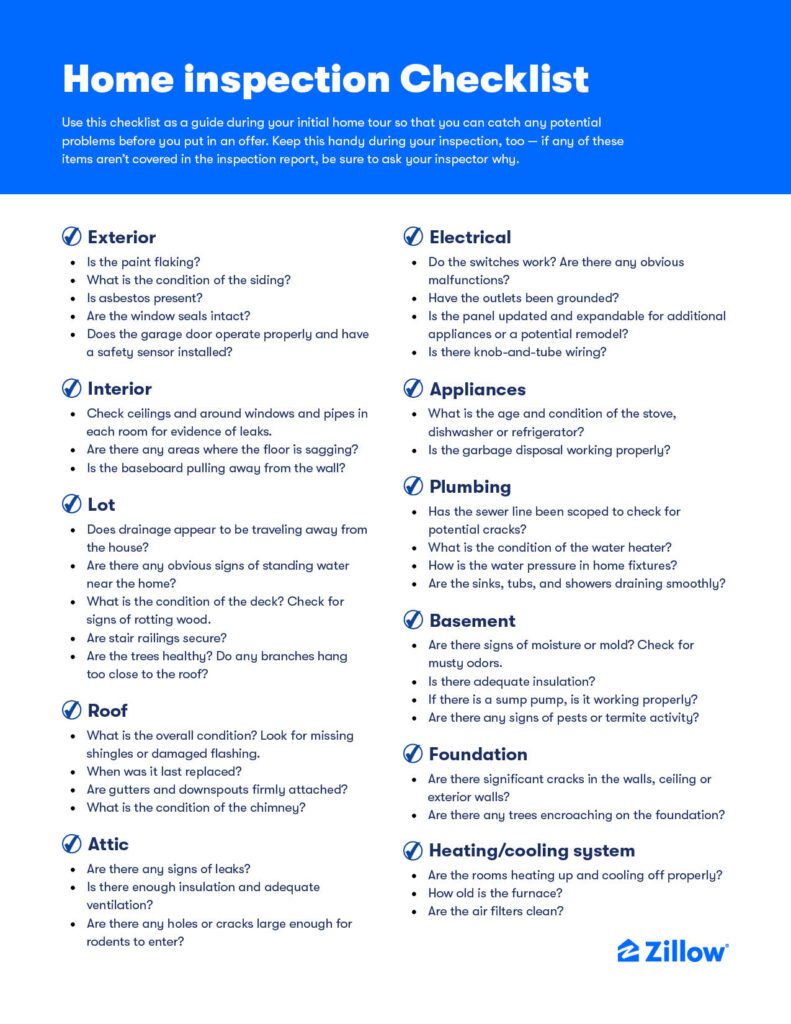

Attic
Insulation
Inspect the attic insulation for any signs of damage, deterioration, or gaps. Pay attention to areas exposed to moisture and ensure proper ventilation. Ensure that the insulation is properly installed and meets the recommended levels for energy efficiency. Well-maintained attic insulation helps prevent heat loss or gain and contributes to overall energy savings.
Ventilation
Proper ventilation in the attic is crucial for removing excess heat and moisture. Inspect any ventilation systems, such as ridge vents or soffit vents, for proper function and cleanliness. Ensure that the systems effectively remove stale air and prevent moisture buildup. Well-maintained attic ventilation contributes to a comfortable and moisture-free environment.
Roof
Inspect the attic roof for any signs of damage, such as leaks, cracks, or missing shingles. Check for proper flashing around chimneys, vents, and skylights. Pay attention to any signs of water stains or mold growth. Address any issues with the attic roof promptly to prevent further damage and ensure the integrity of the entire property.
Windows
Inspect any attic windows for any signs of damage, such as cracks, broken seals, or foggy glass. Ensure that the windows are properly sealed and that there are no gaps or leaks. Consider the placement and functionality of attic windows in relation to natural light and ventilation. Well-maintained attic windows contribute to both the functionality and aesthetic appeal of the space.
Electrical wiring
Check all electrical wiring in the attic to ensure it is properly installed and not damaged. Make sure there are no exposed wires or loose connections. Pay attention to any signs of overheating or inadequate insulation. Any issues with electrical wiring should be addressed by a qualified electrician to ensure safety.
Pests/Signs of damage
Inspect the attic for any signs of pests, such as rodents or insects. Look for any evidence of infestations, such as droppings or damaged insulation. Pay attention to any signs of damage, such as chewed wires or wood. Address any pest or damage issues promptly to prevent further damage and maintain the integrity of the attic.
Accessibility
Inspect the attic for accessibility and safety features, such as proper stairs or ladders. Ensure that these features are stable, secure, and in good condition. Consider the ease of access to the attic for maintenance or storage purposes. Well-maintained attic accessibility features provide convenience and safety.
Lighting
Inspect all lighting fixtures in the attic for any signs of damage or malfunction. Ensure that the lighting is adequate for both general illumination and task-specific needs. Consider the placement and type of lighting fixtures to provide proper illumination throughout the space. Well-lit attics enhance both functionality and safety.
Fire safety
Inspect the attic for any fire safety features, such as fire-rated insulation or smoke detectors. Ensure that these features are properly functioning and have fresh batteries. Consider the placement and number of fire safety devices to provide adequate coverage within the attic. Regularly test and maintain these devices to ensure optimal fire safety.
Structural integrity
Inspect the attic for any signs of structural issues, such as sagging or compromised beams. Look for any indications of water damage or rot that may affect the structural integrity. Ensure that the attic is properly ventilated and insulated to prevent moisture-related issues. Any concerns with the structural integrity of the attic should be addressed promptly by a professional to ensure the safety of the entire property.
Utility Room
Electrical panel
Inspect the electrical panel in the utility room to ensure it is properly functioning and not damaged. Make sure there are no exposed wires or loose connections. Consider the placement and labeling of circuits for easy identification. Any issues with the electrical panel should be addressed by a qualified electrician to ensure safety.
Plumbing
Inspect the utility room plumbing fixtures, such as sinks, faucets, and laundry connections, for any signs of leaks or damage. Check for proper water flow and drainage. Look for any loose connections or worn-out parts that may require repair or replacement. Consider the condition and functionality of each fixture in relation to your needs. Well-maintained utility room plumbing fixtures contribute to a functional and efficient space.
Water heater
Inspect the water heater in the utility room for any signs of leaks, rust, or damage. Check for proper temperature settings and ensure that the pressure relief valve is working correctly. Consider the capacity and energy efficiency of the water heater for your needs. Regularly maintain the water heater by flushing it and replacing sacrificial anode rods as recommended. Properly maintained water heaters provide reliable hot water and energy savings.
HVAC systems
Inspect any HVAC systems in the utility room, such as furnaces or air conditioners, for any signs of damage or malfunction. Check for proper function, including temperature control and air circulation. Ensure that the systems are properly maintained and that filters are regularly replaced. Consider the age and energy efficiency of the systems to determine if any upgrades or repairs are necessary. Properly functioning HVAC systems contribute to a comfortable and energy-efficient utility room.
Ventilation
Proper ventilation in the utility room is essential for removing pollutants and excess moisture. Inspect any ventilation systems, such as exhaust fans or vents, for proper function and cleanliness. Ensure that the systems effectively remove stale air and prevent excessive moisture buildup. Well-maintained utility room ventilation contributes to a healthy and comfortable environment.
Flooring
The utility room flooring should be durable and resistant to water and chemicals. Inspect the flooring for any signs of damage, such as cracks, stains, or wear. Consider the material used for the flooring and its suitability for the utility room environment. Ensure that the flooring is properly clean and free from tripping hazards. A well-maintained utility room floor enhances the overall functionality and safety of the space.
Safety features
Inspect the utility room for any safety features, such as fire extinguishers or gas detectors. Ensure that these features are properly functioning and have fresh batteries. Consider the placement and number of safety devices to provide adequate coverage within the utility room. Regularly test and maintain these devices to ensure optimal safety.
Storage
Inspect any storage systems in the utility room, such as shelves or cabinets, for proper function and stability. Check for any signs of damage, such as warped or sagging shelves. Consider the amount of storage space available and the organization of the utility room. Well-maintained utility room storage systems provide efficient storage and contribute to an organized space.
Lighting
Inspect all lighting fixtures in the utility room for any signs of damage or malfunction. Ensure that the lighting is adequate for various tasks, such as maintenance or laundry. Consider the placement and type of lighting fixtures to provide proper illumination throughout the space. Well-lit utility rooms enhance both functionality and safety.
Utility sink
Inspect the utility sink for any signs of leaks or damage. Check that the faucet and the drainage system are working properly. Consider the size and functionality of the utility sink for your needs. Ensure that the sink is properly clean and free from any blockages. A well-maintained utility sink provides convenience and functionality in the utility room.

